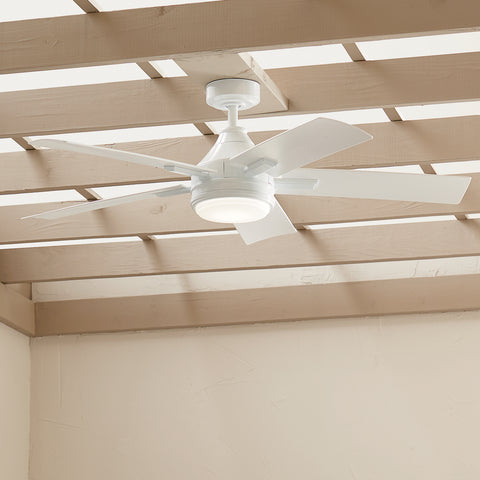

Top 5 Things to Consider Before Buying an Outdoor Ceiling Fan
Outdoor ceiling fans are the perfect addition to any home. Especially during those hot summer months. And this year, with record-breaking temperatures around the world, adding a ceiling fan to your home couldn't be more prudent. With an outdoor ceiling fan, you can adjust the temperature of your outdoor space with just the touch of a button. Here are a few things to consider before you make your purchase.
-
Style. No matter the style you are after modern, eclectic, farmhouse-inspired, highly detailed, or clean and simple. Today’s ceiling fans offer styles to fit any taste:
- Modern Ceiling Fans add a clean, understated touch to open spaces.
- Traditional Ceiling Fans perfectly complement rooms with classic, elegant décor.
- Transitional Ceiling Fans are simple and sophisticated with minimal ornamentation.
- Airflow. A variety of factors like motor size, blade pitch, and blade materials contribute to the amount of air a ceiling fan moves. Today fans are rated by airflow and airflow efficiency. These standardized ratings allow you to compare one fan to another without being an expert on motors and materials. The higher the airflow (cubic feet per minute), the more air the fan moves, and the better the airflow efficiency, the more air is moved per watt. When it comes to airflow outdoors, bigger is better. Consider going up a size in blade sweep to increase the airflow efficiency and combat the elements like wind and heat.
-
Blades. When it comes to outdoor ceiling fans, the blade sweep and blade material are important aspects to consider. Blade sweep refers to the size of blades. The most common blade sizes are 52", 56", and 60". To best determine the size of the ceiling fan, visit our Ceiling Fan Buying Guide: How to Choose the Right Ceiling Fan Size. For outdoor ceiling fans, ABS blades are best. ABS stands for Acrylonitrile Butadiene Styrene. This is just another way of saying, "plastic." ABS, also known as plastic, material withstands moisture and helps prevent warping, for a summer breeze all year round.

-
Damp or wet rating. Lighting fixtures and ceiling fans are given ratings. Ratings refer to the location the fixture can safely be put. There are wet, dry, and damp. The ratings mean exactly what they sound like. For outdoor ceiling fans, you will want to decide if you want a damp or wet-rated fan. Damp-rated fans can withstand moisture but not direct contact with the elements, so they are best used on fully-covered porches and in sunrooms. Wet-rated fans can take the heat (rain, and snow), and can be installed in open spaces like pergolas and outdoor living areas.

- Weather+™. Last but certainly not least, consider an outdoor ceiling fan with Weather+™. Kichler Lighting just released a whole new line of outdoor fans with Weather+™ technology. According to Kichler's website, a fan with Weather+™ is, "...Designed to withstand wet-rated weather conditions, plus combat the effect of certain environmental factors such as saltwater spray and impact from UV rays." You can shop for their new ceiling fans here on our website.
A special thank you to Kichler for the inspiration for this blog. Many of the tips and ideas were taken from their site and their Tips for Buying a Ceiling Fan Guide.

Leave a comment